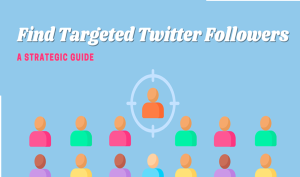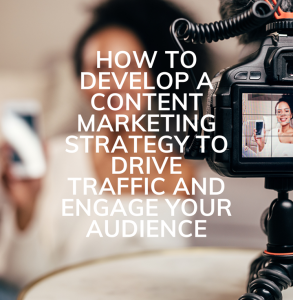
Cold emailing is a tried and tested marketing method that allows for an effective, direct and personalized approach to converting leads.
It will open the door to fruitful conversations, help you build relationships and, ultimately, land you new sales if you execute it correctly.
That’s why we’re here to help! From the crucial first impression to the clear and actionable call-to-action that prompts a response, we aim to guide you every step of the way. Let’s start.
Key Cold Emailing Strategies to Help You Convert Leads1. Mastering Cold Email Essentials
We’ll begin with what a cold email recipient sees first and what greatly impacts their decision to open or completely ignore the email. You’ve guessed it – it’s the subject line.
A great subject line needs to grab attention by concisely conveying value or a sense of urgency. Generally speaking, it’s effective to use phrases like “Quick question for you” or “Exclusive offer for [Company Name]”. Note that it also needs to be personalized.
The actual content of your message must be short and sweet.
Begin with a brief introduction, then quickly transition into clearly articulating how your product/service solves a problem or adds value to the recipient’s business. Avoid long-winded explanations, as a rule of thumb don’t go above 150 characters, and use bullet points for clarity and brevity if necessary.
Your call-to-action (CTA) is an essential part of your cold email content. It should specifically tell recipients exactly what you want them to do next. For example, “Click here to schedule a 15-minute call” is clear and actionable.
2. Leveraging Social Proof
A strategy you need to utilize to build credibility and trust in your offerings. Let’s look at the main types of social proof
Testimonials: Direct, concise quotes from clients that highlight the positive results and benefits they’ve experienced. To add authenticity, they must be genuine and attributed to real people, along with their titles and companies.Case studies: These should tell a story that’s relatable so that your recipient can see themselves in it. Start with the client’s challenge, detail the solution you provided, and end with the results achieved. Quantifiable achievements are very persuasive as they show potential clients exactly what they can gain, so include specific KPIs.Awards and recognitions: You shouldn’t hesitate and demonstrate your excellence is acknowledged by the industry.3. Understanding Your Recipient

To craft messages that resonate with your recipients and drive more leads with cold emailing for SMBs (large companies use this method much less frequently) – you must first understand their company’s products/services, target market, and industry challenges.
So, look for specific pain points the company or industry is facing. Have there been recent changes in their market, regulatory challenges, or other, frequent obstacles?
You’ll find LinkedIn, the recipient-associated website, and industry forums and publications to be invaluable in gathering this information.
Once you have it, compose the message by positioning your offering as a solution to a problem they have, not just another product. How does it save time, reduce costs, improve efficiency, or drive growth for them specifically?
4. Ensuring Time-Efficiency
Personalization is key to sending successful cold emails, but when used at scale, it’s very time-consuming. Luckily, there’s a way to both craft the most effective messages and reduce the amount of raw work.
This is recipient segmentation, done either by industry segmentation (as described above) or the recipient’s company role.
Each role has specific responsibilities and challenges. A CTO, for example, would be focused on technological innovation and efficiency, while a Marketing Director is more concerned with lead generation and brand awareness. Tailor your segmented messages accordingly.
To help you more conveniently scale your efforts, you may additionally use a cold email generator tool and manually add the finishing touches to its output.
5. Mobile Optimization

According to various studies, more than half of all emails nowadays are opened on mobile devices. Emails that aren’t optimized for mobile are usually difficult to read and interact with, leading to significantly lower engagement rates.
You have to ensure:
A responsive design: Use email templates that automatically adjust the message layout to the screen size of a device.Readable font size: A minimum of 14px for body text and 22px for headlines.Clickable CTAs: Your call-to-action buttons must be large enough so that recipients can tap easily on a mobile device; a general guideline is to make them at least 44×44 pixels.Concise content: Mobile screens have limited space – keep your messages brief and to the point.
Before finalizing your email, you should first test how it looks on various devices and email clients. For this purpose, you may utilize device emulators like Litmus or Email on Acid or even real device testing.
6. The Power of A/B Testing
This kind of testing is done across many industries and is, simply put, invaluable.
You test one cold email element at a time, whether it’s the subject line, email content, CTA, sending time, or something else. This allows you to precisely pinpoint what works and what you need to improve.
Before starting any A/B test, however, you need to be clear about what you’re looking to achieve as part of the broader goal of attaining new customers – increase the open rate, improve the click-through rate, boost the number of replies? Keeping track of these KPIs will guide your A/B testing.
Now, develop two versions of your cold email, each differing only by the one element you’ve chosen to test. Send the versions to two equally sized groups, and do so simultaneously to ensure that timing doesn’t affect the outcome.
Analyze the results based on the metric(s) that matters most to your original objective. Tools like Mailchimp and HubSpot will help you measure performance indicators.
For more insights on this part of the job, check out our dedicated post on effective email testing strategies.
7. The Art of Follow-up

There’s a fine line between being persistent and becoming intrusive. To show respect for your recipient’s inbox and time, you shouldn’t go beyond sending a couple of follow-ups.
You can send the first one 3-7 days after your first email in order to give the recipient enough time to have seen the initial email, but not too much time lest they forget about it. Any additional follow-ups you need to space by at least a week.
With each follow-up, offer cold email value that you haven’t already. This can be new insights about how your product/service will benefit the recipient, a relevant case study, or an invitation to a webinar that addresses their challenges.
However, at the same time, your follow-ups should be even shorter than the initial email.
Get straight to the point, remind the recipient of your previous email, and clearly state the purpose of your current follow-up for best results.
Conclusion
As it offers a direct line to potential customers, cold emailing can be a vital tool in your marketing arsenal.
And with the 7 key strategies we’ve gone over in this post, you’re now equipped with the most essential advice and insights to guide you.
(Additionally, make sure to tick these things off first before your email is ready to send.)
Good luck – here’s to writing excellent cold emails and successfully converting those leads!





